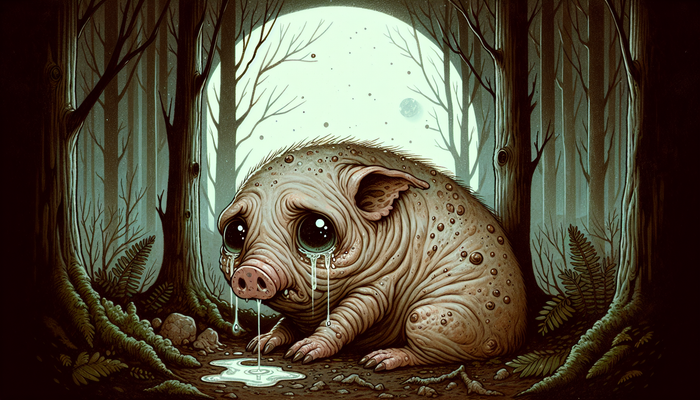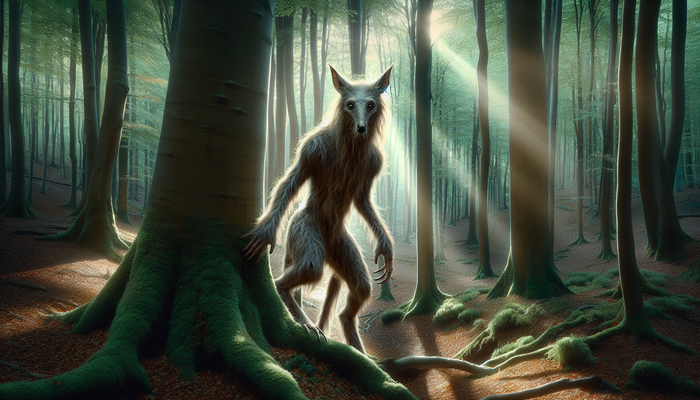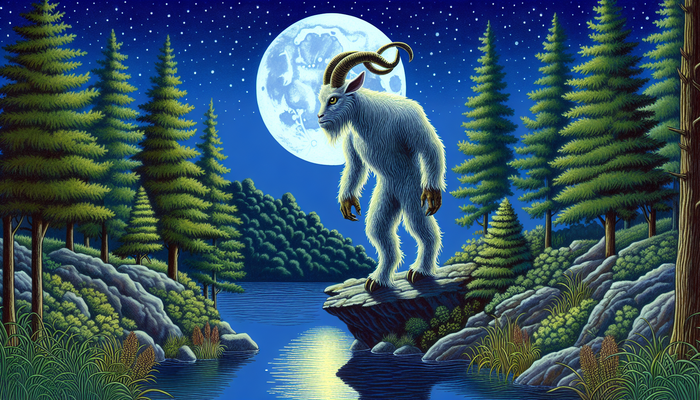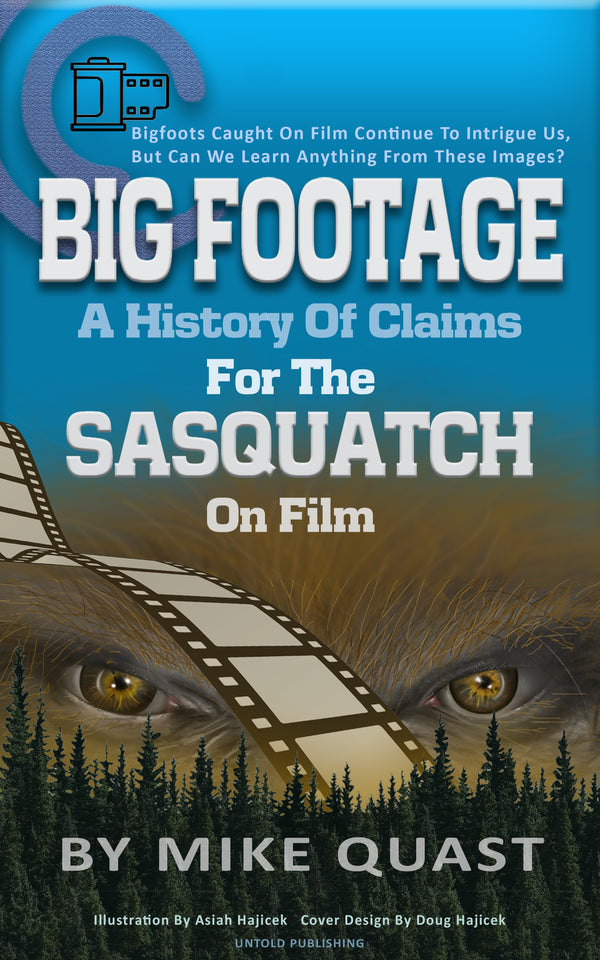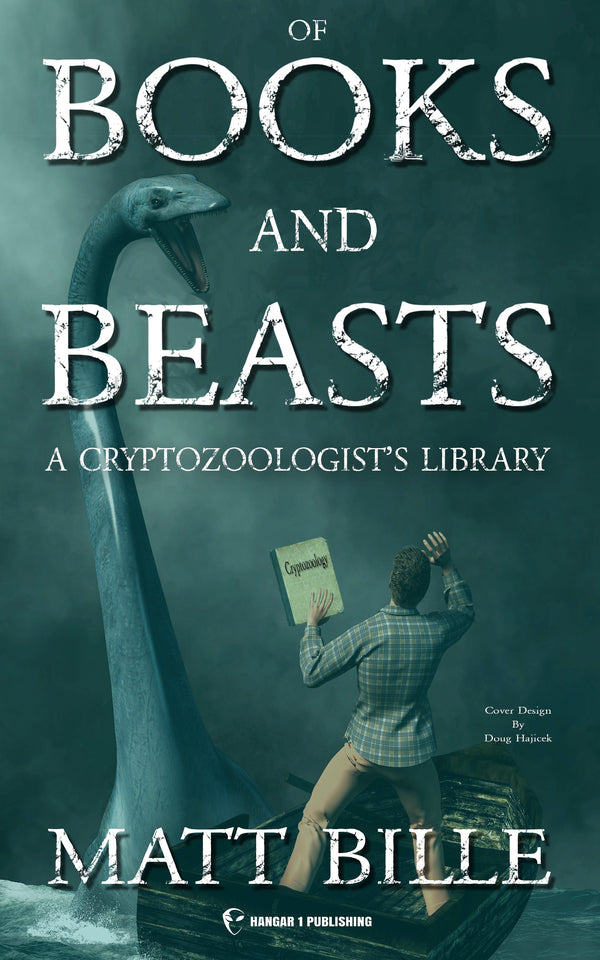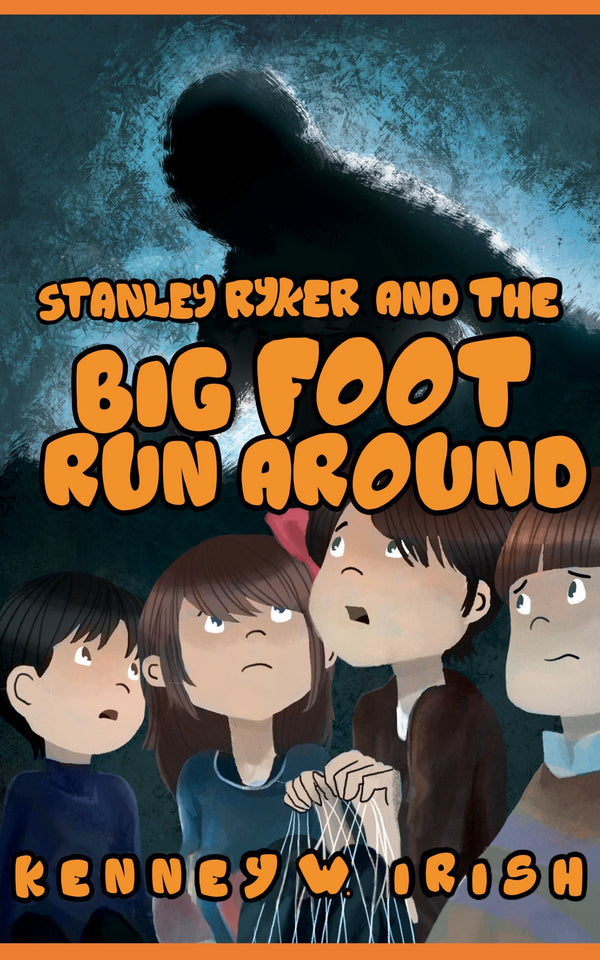Welsh Dragons and Their Lore
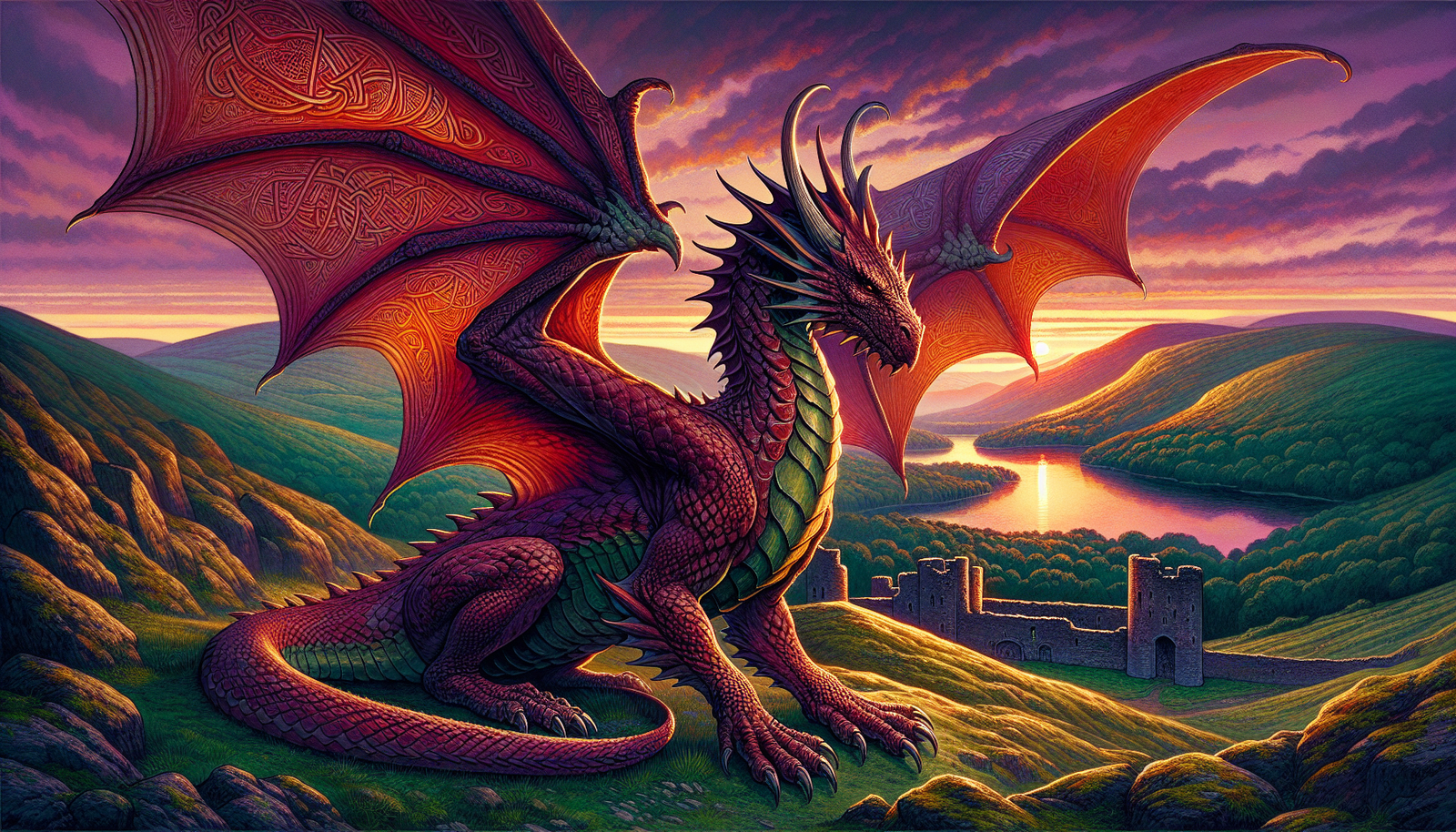
By Wade Beaumont, Cryptozoologist
Howdy, folks! Wade Beaumont here, and I'm fixin' to take y'all on a wild ride through the land of dragons—Welsh dragons, to be precise. Now, I know what you're thinkin'. "Wade, ain't you more at home chasin' Bigfoot through the piney woods of East Texas?" Well, you'd be right about that, but let me tell you somethin': when it comes to legendary creatures, there's a whole world out there beyond our neck of the woods, and the Welsh dragon, or Y Ddraig Goch as they call it, is about as legendary as they come.
Picture this: a fierce, fire-breathin' beast, red as the embers of a campfire, perched atop a castle, its wings spread wide against a stormy sky. That's the Welsh dragon for ya, and it's not just some fancy picture on a flag. No sir, this creature is the very heart and soul of Wales, as much a part of the land as the rolling hills and misty valleys.
Now, I may be a Texas boy through and through, but I've always had a hankerin' for a good story, especially ones that have stood the test of time. And let me tell you, the tales of the Welsh dragon have been around longer than the Alamo's been standin'. These stories ain't just tall tales told around a campfire; they're the lifeblood of a nation, carryin' the hopes, dreams, and fighting spirit of the Welsh people through centuries of struggle and triumph.
So, saddle up, partners. We're about to dive deep into the world of Y Ddraig Goch. We'll trace its origins back to the misty days of old, unravel the myths that have grown up around it like kudzu on a fence post, and see how this mighty beast has become more than just a symbol—it's become the very embodiment of Welsh identity and pride.
By the time we're done, you'll understand why the Welsh dragon is more than just a fancy mascot. It's a testament to the power of storytelling, the endurance of national spirit, and the way a single image can capture the imagination of an entire people. And who knows? By the end of this journey, you might just find yourself as fascinated by these Welsh dragons as I am by the elusive Bigfoot of the Texas wilderness.
So, let's get to it, shall we? There's a whole world of dragon lore waitin' for us, and I aim to leave no stone unturned in our quest to understand the mighty Y Ddraig Goch.
Historical Origins of the Welsh Dragon
Early Mentions
Now, let me tell you, trackin' the origins of the Welsh dragon is like tryin' to follow a set of centuries-old footprints through a creek bed after a spring rain. It ain't easy, but for folks like me who love a good mystery, it sure is excitin'.
The first solid mention we've got of this fire-breathin' symbol of Wales comes from a dusty old book called the Historia Brittonum, or "The History of the Britons" if you prefer your Latin in plain English. This ain't no modern tome, mind you. We're talkin' about a text that was penned way back around 820 AD by a Welsh monk named Nennius. Now, Nennius wasn't just some fella scribblin' down fairy tales. He was a serious historian, tryin' to piece together the story of his people in a time when the world was changin' faster than a tumbleweed in a Texas tornado.
In this ancient text, Nennius tells us about a fella named King Vortigern. Now, Vortigern wasn't exactly what you'd call a model ruler. In fact, he was in a heap of trouble, tryin' to keep his kingdom together while facin' invasions from all sides. It's in this context that our dragon makes its first appearance, and let me tell you, it's a doozy of a tale.
According to Nennius, Vortigern was tryin' to build himself a fortress on a hill called Dinas Emrys. But every time his men would lay the foundations, they'd come back the next day to find everything all torn up, like a wild hog had been rootin' through their work. Now, this is where things get interestin'. Vortigern's advisors tell him that to solve this problem, he needs to find a boy with no father and sacrifice him. Sounds pretty gruesome, don't it? Well, they find this boy, and he turns out to be none other than Merlin himself—yep, that Merlin, the wizard from all them King Arthur stories.
But young Merlin ain't about to let himself be sacrificed. Instead, he tells Vortigern that the real reason his castle keeps fallin' down is that there are two dragons fightin' beneath the hill—one red and one white. When they dig down, sure enough, there are the dragons, battlin' it out like there's no tomorrow.
Now, this ain't just some fairy tale. Nennius is usin' this story to talk about some real heavy stuff. The red dragon, he says, represents the native Britons—the ancestors of the Welsh—while the white dragon stands for the invadin' Saxons. It's a way of talkin' about the struggles the Welsh were facin', wrapped up in a story that would stick in people's minds.
This tale in the Historia Brittonum is more than just the first mention of the Welsh dragon. It's the seed from which a whole forest of legends would grow. It ties the dragon to the very land of Wales, to the struggles of its people, and to some of the most famous figures in British mythology. It's like Nennius was plantin' a flag, sayin', "This here's our symbol, and it's got a history as old as the hills."
But the Historia Brittonum ain't the only place we find early mentions of the Welsh dragon. There's another important source that comes a bit later, but reaches back even further into history. I'm talkin' about the work of a fella named Geoffrey of Monmouth, who was writin' in the 12th century. Geoffrey was quite a character, let me tell you. He wrote a book called the Historia Regum Britanniae, or "The History of the Kings of Britain," which is about as much history as a cowboy movie, if you catch my drift.
But even if Geoffrey was playin' fast and loose with the facts, his stories had a huge impact. He takes that tale of the red and white dragons and expands on it, weavin' it into a grand narrative about the history of Britain. In Geoffrey's tellin', the dragon becomes tied to the legendary King Arthur and his father, Uther Pendragon. The name "Pendragon" itself means "chief dragon" or "head dragon" in Welsh, which just goes to show how central this symbol had become.
Geoffrey's work helped to spread the legend of the Welsh dragon far and wide. It wasn't just a local symbol anymore; it was part of a grand mythology that captured the imagination of people all across Britain and beyond. Thanks to Geoffrey, the red dragon became associated with prophecy, with the once and future king, and with the idea that the Welsh people would one day reclaim their rightful place.
Now, you might be wonderin' why I'm spendin' so much time talkin' about these old stories. Well, let me tell you somethin' I learned trackin' Bigfoot through the backwoods of Texas: to understand somethin', you've got to know where it came from. These early mentions of the Welsh dragon ain't just ancient history. They're the foundation of everything that came after. They're the reason why, centuries later, the red dragon is still the proud symbol of Wales, flyin' high on flags and stamped on everythin' from government buildin's to rugby jerseys.
These stories, whether they're the more historical account of Nennius or the fanciful tales of Geoffrey of Monmouth, show us that the Welsh dragon was never just a cool design somebody came up with. From the very beginnin', it was a symbol with meanin'. It represented the Welsh people, their struggles, their hopes, and their belief in their own strength and resilience.
And let me tell you, that's somethin' powerful. It's like the stories my granddaddy used to tell about the Alamo. They might not all be strictly true, but they speak to somethin' deep in the heart of what it means to be Texan. The Welsh dragon does the same thing for the people of Wales. It's a reminder of who they are and where they came from, all wrapped up in the image of a fierce, fire-breathin' beast.
So next time you see that red dragon on the Welsh flag, remember: you're not just lookin' at a pretty picture. You're seein' the culmination of over a thousand years of history and legend, a symbol that's been inspirin' people since before the first stone of the Alamo was laid. And that, my friends, is somethin' truly special.
Etymology and Symbolism
Now, let's mosey on down to the nitty-gritty of where this whole "dragon" business came from in the first place. You see, words are like the tracks an animal leaves behind—if you know how to read 'em, they can tell you a whole lot about where somethin' came from and how it got to where it is.
The word "dragon" itself comes from the Latin word "draco." Now, I know what you're thinkin'. "Wade, what's a bunch of ancient Romans got to do with Wales?" Well, let me tell you, quite a bit, as it turns out. You see, the Romans weren't just hangin' around in togas and buildin' roads. They were also soldiers, and mighty fine ones at that.
These Roman legions had a special kind of military standard called a "draco." Picture this: a big ol' dragon head made of metal, sittin' atop a pole. Behind it, there'd be a long piece of fabric, kinda like the tail of a kite. When the wind caught it just right, it'd make a hissin' sound, like a real dragon breathin' fire. Now, if you were some poor soul facin' down a Roman legion, and you saw and heard that comin' at you, you'd be shakin' in your sandals, I guarantee it.
This "draco" standard wasn't just for show, neither. It was a symbol of the cohort, a unit in the Roman army. The fella carryin' it was called a "draconarius," which is about as fancy a title as you can get for "the guy with the dragon." It was a position of honor, and it shows just how important this symbol was to the Romans.
Now, here's where it gets real interestin'. After the Romans left Britain, the idea of the dragon as a military symbol stuck around. It's like they planted a seed, and the native Britons—the ancestors of the Welsh—took that seed and grew it into somethin' all their own.
By the early 5th century, we start seein' the Welsh kings of Aberffraw usin' the dragon as their own symbol. These fellas weren't just pickin' a cool mascot; they were makin' a statement. By adoptin' the dragon, they were sayin', "We're the ones in charge now, and we've got the power to back it up."
This is where the symbolism of the dragon really starts to take shape. In Welsh, the word for dragon is "draig," and it's got a double meanin'. Sure, it means "dragon," but it also means "leader" or "warrior." So when you're talkin' about a Welsh dragon, you're not just talkin' about some mythical beast. You're talkin' about leadership, about fightin' spirit, about the very essence of what it means to be Welsh.
Think about it like this: in Texas, we've got the Lone Star. It's not just a pretty shape on our flag; it stands for our independent spirit, our pride in who we are. The Welsh dragon does the same thing for Wales, only they've been at it a whole lot longer.
Now, let's talk about why it's a red dragon specifically. The color red has always been associated with fire, with blood, with life itself. In heraldry—that's the fancy art of coats of arms and such—red symbolizes courage and valor. So when you put that red color on a dragon, you're not just makin' it look fierce. You're sayin' somethin' about the character of the people it represents.
The use of the red dragon as a symbol for Wales didn't just happen overnight. It evolved over centuries, gatherin' meanin' like a tumbleweed gatherin' twigs. By the time we get to the medieval period, the red dragon is firmly established as the symbol of the Welsh people, standin' in opposition to the white dragon of the Saxons.
This symbolism goes deep, folks. It's not just about two different groups of people. It's about two different ways of life, two different claims to the land. The red dragon of the Welsh represents the native Britons, the people who were there first. The white dragon of the Saxons represents the invaders, the newcomers tryin' to take over.
In all these stories and symbols, the red dragon might get knocked down, but it always gets back up. It might be outmatched, but it never gives up. And in the end, even if it doesn't win outright, it survives. That's a powerful message for a people who've faced their fair share of hardships and invasions over the years.
So when you see that red dragon on the Welsh flag, remember: you're not just lookin' at a cool design. You're seein' a symbol that's been shaped by centuries of history, a representation of an entire people's identity and fighting spirit. It's a testament to the power of symbols to carry meanin' across generations, to inspire and unite people in a way that mere words sometimes can't.
In my line of work, trackin' down legends and myths, I've seen how powerful symbols can be. The Welsh dragon might not be a real creature you can spot in the wild, like the Bigfoot I've been chasin' all these years. But in a way, it's even more real. It lives in the hearts and minds of the Welsh people, a constant reminder of their history, their struggles, and their enduring spirit.
And let me tell you, that's a kind of reality that's just as powerful, if not more so, than any physical creature. It's the kind of symbol that can inspire people to greatness, that can give them strength in hard times, and that can unite them in a shared sense of identity and purpose.
So next time you see that red dragon, whether it's on a flag, a coat of arms, or a rugby jersey, take a moment to appreciate it. You're not just seein' a picture; you're seein' the distilled essence of an entire nation's spirit, captured in the form of a fierce, proud, and indomitable dragon.
The Legend of the Two Dragons
The Tale of Vortigern and Merlin
Alright, folks, gather 'round, because I'm about to spin you a yarn that's older than the hills and twice as mysterious. We're talkin' about the legend of Vortigern and Merlin, a tale that's got more twists and turns than a rattlesnake in a roller derby.
Now, this story takes place way back in the 5th century, a time when Britain was about as stable as a one-legged calf in a windstorm. The Romans had packed up and left, and all sorts of folks were tryin' to claim a piece of the pie. Enter Vortigern, a fella who'd managed to become the High King of the Britons, but was findin' out that wearin' the crown was about as comfortable as a cactus saddle.
Vortigern had a problem, you see. He was tryin' to build himself a nice, sturdy fortress on a hill called Dinas Emrys in what's now North Wales. Should've been a straightforward job, right? Well, it was turnin' out to be anythin' but. Every day, Vortigern's men would work their fingers to the bone layin' the foundations. But come mornin', they'd find the whole thing had collapsed, like a house of cards in a Texas tornado.
Now, Vortigern wasn't the type to just shrug his shoulders and give up. He called in his wise men, figurin' they'd have some explanation for this supernatural shenanigan. These fellas put their heads together and came up with a solution that'd make your hair stand on end. They told Vortigern that to make the fortress stand, he needed to find a boy with no father and sacrifice him, sprinklin' his blood on the foundations.
I know what you're thinkin'. "Wade, that's about as crazy as tryin' to rope the wind!" And you'd be right. But these were desperate times, and Vortigern was a desperate man. So off went his men, searchin' high and low for this fatherless boy.
Well, they found one alright, in a place called Carmarthen. But this wasn't just any boy. This was Myrddin Emrys, better known to most folks as Merlin. Yep, that Merlin—the one who'd go on to be the most famous wizard in all of British legend.
Now, young Merlin wasn't too keen on bein' sacrificed, as you might imagine. But instead of runnin' for the hills, he stood his ground. He told Vortigern that his wise men were about as useful as a screen door on a submarine, and that he knew the real reason why the fortress kept fallin' down.
According to Merlin, the problem wasn't anythin' to do with sacrifices or curses. Nope, the issue was right under their feet. He told Vortigern that beneath the hill where they were tryin' to build, there was an underground pool. And in that pool, there were two dragons—one red and one white—locked in an eternal battle.
Vortigern, bein' the kind of fella who didn't take a boy's word for gospel, decided to put this to the test. He ordered his men to dig down into the hill. And wouldn't you know it, they found exactly what Merlin had described—a hidden pool with two dragons sleepin' at the bottom.
Now, here's where things get real interestin'. As soon as the dragons were uncovered, they woke up and started fightin' like two tomcats in a gunny sack. The white dragon seemed to have the upper hand at first, beatin' the red dragon somethin' fierce. But then, just when it looked like it was all over, the red dragon rallied. It fought back with everythin' it had, and in the end, it drove the white dragon away.
Merlin, bein' the clever boy he was, didn't just leave it at that. He explained to Vortigern what this all meant. The red dragon, he said, represented the native Britons—Vortigern's people. The white dragon stood for the Saxon invaders who were tryin' to take over the land.
This wasn't just a cool story about magical creatures. It was a prophecy, a vision of the future of Britain. Merlin was tellin' Vortigern that times were gonna be tough. The Saxons (the white dragon) might seem like they're winnin' for a while, but in the end, the Britons (the red dragon) would triumph.
Now, I've spent many a night out in the wilderness, trackin' creatures that most folks say don't exist. And let me tell you, there's power in these old stories. Whether or not there were really dragons under that hill doesn't matter so much. What matters is what the story meant to the people who told it and heard it.
For the Welsh, this tale of the two dragons became a symbol of hope and resilience. It told them that no matter how bad things got, no matter how much it looked like they were beaten, they had the strength to fight back and win in the end.
And that red dragon? It became more than just a character in a story. It became the symbol of Wales itself, a reminder of their heritage and their fighting spirit. To this day, you'll see that red dragon on the Welsh flag, standin' proud and fierce, just like in Merlin's prophecy.
So next time you hear someone dismiss old legends as just fairy tales, you remind them of this story. Remind them that sometimes, the most important truths come wrapped up in the most fantastic packages. Because at its heart, the tale of Vortigern and Merlin isn't just about dragons and wizards. It's about identity, about struggle, and about the power of a people to endure against all odds.
And if that ain't worth rememberin', well, I don't know what is.
Symbolic Meaning
Now, let's dig a little deeper into what this whole dragon ruckus is really all about. You see, when you're dealin' with myths and legends, there's always more than meets the eye. It's like trackin' a creature through the woods—you've got to look beyond the obvious signs and read between the lines.
The tale of the red and white dragons ain't just a fancy bedtime story. It's packed with more symbolism than a rodeo belt buckle, and every bit of it speaks to the heart of Welsh identity and history.
Let's start with the red dragon. In the story, this fella represents the native Britons, the ancestors of the Welsh people. Now, why a dragon, you might ask? Well, dragons have always been symbols of power and strength. In many cultures, they're associated with wisdom and nobility. By usin' a dragon as their symbol, the Welsh were layin' claim to all these qualities.
But it ain't just any dragon—it's a red one. The color red has always been tied to life, to blood, to passion. In heraldry (that's the fancy art of coats of arms and such), red symbolizes courage and valor. So when you put all that together, you've got a symbol that says, "We're strong, we're wise, and we've got the courage to back it up."
Now, let's mosey on over to the white dragon. This critter represents the Saxon invaders, the folks who were tryin' to muscle in on British territory. White might seem like an odd choice for the bad guys, but remember, in this context, white isn't about purity—it's about foreignness. The white dragon is the outsider, the invader, the threat to the established order.
The battle between these two dragons? That's where the real meat of the symbolism lies. It's a representation of the struggle between the native Britons and the invadin' Saxons. And let me tell you, it wasn't just a scuffle over a patch of land. This was a fight for survival, for identity, for the very soul of a people.
In the story, the white dragon seems to be winnin' at first. That's a nod to the historical reality—the Saxons did indeed gain a foothold in Britain, pushin' the native Britons back. But here's the kicker: the red dragon doesn't give up. Even when things look bleakest, it keeps fightin'. And in the end, it drives the white dragon away.
This right here is the heart of what the Welsh dragon means to the people of Wales. It's not just about winnin' or losin'. It's about perseverance, about holdin' on to who you are even when the odds are stacked against you. It's a promise that no matter how tough things get, the spirit of the Welsh people will endure.
Now, you might be thinkin', "Wade, that's all well and good, but it's just a story, right?" Well, let me tell you somethin' I've learned in my years of chasin' down legends: sometimes, a story can be more powerful than any historical fact.
This tale of the two dragons has been passed down through generations of Welsh folks. It's been told around firesides, written in books, and depicted in art. It's become a part of the Welsh psyche, a shared narrative that helps define who they are as a people.
When a Welsh person sees that red dragon on their flag, they're not just seein' a cool design. They're seein' a symbol of their heritage, their resilience, their identity. It's a reminder that they come from a long line of fighters and survivors, people who held onto their culture and their land against all odds.
And here's the real kicker: the symbolism of the red dragon ain't just about the past. It's alive and kickin' in the present day. When Welsh rugby players take the field with that dragon on their chests, they're carryin' the weight of this ancient symbol with them. When Welsh politicians make decisions for their nation, they're doin' it under the watchful eye of Y Ddraig Goch.
In my line of work, I've seen how powerful symbols can be. The Welsh dragon might not be a flesh-and-blood creature like the Bigfoot I've been trackin' all these years, but in many ways, it's just as real. It lives in the hearts and minds of the Welsh people, a constant reminder of who they are and where they came from.
So next time you see that red dragon, whether it's on a flag, a coat of arms, or a touristy t-shirt, take a moment to appreciate what it really means. You're not just lookin' at a picture of a mythical beast. You're seein' the distilled essence of an entire nation's spirit, captured in the form of a fierce, proud, and indomitable dragon.
And let me tell you, that's a kind of magic that's every bit as powerful as any wizard's spell or dragon's fire. It's the magic of identity, of shared history, and of a people united by a common symbol. In a world where so much changes from day to day, that's somethin' truly special.
The Mabinogion and Other Texts
Mabinogion Tales
Now, folks, let's saddle up and ride on over to one of the most fascinatin' collections of Welsh folklore you're ever likely to come across—the Mabinogion. If you think the story of Vortigern and Merlin was a wild ride, well, you ain't seen nothin' yet.
The Mabinogion is like the Welsh equivalent of the Brothers Grimm fairy tales, only it's a heck of a lot older and, if you ask me, a fair bit stranger. These stories have been passed down through generations, first by word of mouth and later written down in the Middle Ages. They're chock-full of magic, adventure, and more mythical creatures than you can shake a stick at.
But we're here to talk about dragons, and the Mabinogion doesn't disappoint on that front. One of the most interestin' tales for our purposes is the story of Lludd and Llefelys. Now, don't worry if you can't pronounce those names—I reckon even most Welsh folks might stumble over 'em.
This tale is set way back in the mists of time, when Lludd was the king of Britain. Lludd was havin' a rough go of it, because his kingdom was sufferin' from three terrible plagues. Now, we're not talkin' about your run-of-the-mill problems here. These were supernatural afflictions that were makin' life miserable for everyone.
The first plague was the arrival of a race of beings called the Coranians, who could hear every word spoken in the kingdom, no matter how quietly it was said. The second plague, and this is where our dragons come in, was a terrible scream that was heard throughout the land every May Eve. This scream was so awful that it caused men to lose their strength, women to miscarry, and young folks to go plumb crazy.
Now, Lludd was at his wit's end tryin' to figure out what was causin' this racket. So he went to his brother Llefelys, who was the king of France, for advice. Llefelys, bein' a clever sort, told Lludd that the scream was comin' from two dragons fightin'.
But these weren't just any old dragons. One was native to Britain, while the other was a foreign invader. Every year, on May Eve, they'd duke it out, and the native dragon's pained cries were what was causin' all the trouble.
Llefelys gave Lludd a plan to deal with these rowdy reptiles. He told him to measure the length and breadth of Britain to find its exact center. Once he found it, he was to dig a pit there and fill it with the finest mead he could get his hands on. Then, he was to cover the pit with a silk cloth.
When May Eve rolled around, Lludd did as he was told. Sure enough, the dragons showed up and started fightin'. But the smell of that mead was too temptin' for 'em to resist. They drank their fill and, bein' dragons and all, they couldn't hold their liquor. They fell asleep right there on the silk cloth.
Quick as a wink, Lludd wrapped 'em up in the cloth and buried 'em deep in the ground at Dinas Emrys. And wouldn't you know it, that put an end to the terrible scream.
Now, if this story sounds familiar, that's because it's got a lot in common with the tale of Vortigern and Merlin we talked about earlier. In fact, many scholars reckon this might be an earlier version of the same legend. But there are some important differences.
In this version, there's no mention of the colors of the dragons, or of one beatin' the other. Instead, the focus is on trappin' both dragons to bring peace to the land. It's a reminder that in the oldest versions of these stories, the symbolism wasn't quite as cut and dried as it would later become.
But even without the red and white symbolism, this story is still packed with meanin'. The idea of a native dragon defendin' its territory against a foreign invader is a powerful one, especially for a people who've faced their fair share of invasions over the centuries.
And let's not forget about that mead. The fact that the dragons are ultimately defeated not by force, but by trickery and their own greed, adds another layer to the tale. It's a reminder that sometimes, brains can triumph over brawn, even when you're dealin' with creatures as powerful as dragons.
The Mabinogion ain't just a collection of fairy tales. It's a window into the Welsh soul, a glimpse of how they saw the world and their place in it. These stories have shaped Welsh culture for centuries, influencin' everything from literature to art to the way people think about their own identity.
In my years of investigatin' legends and folklore, I've learned that stories like these are more than just entertainment. They're a way for people to make sense of their world, to pass on important values and ideas from one generation to the next. The dragons in the Mabinogion might not be real in the flesh-and-blood sense, but the truths they represent are as real as the ground beneath our feet.
So next time you're sippin' on a cold one, spare a thought for those dragons in the Mabinogion. They might've been brought low by a pit of mead, but their story lives on, a testament to the enduring power of Welsh folklore and the dragons that roam through it.
From Bigfoot to UFOs: Hangar 1 Publishing Has You Covered!
Explore Untold Stories: Venture into the world of UFOs, cryptids, Bigfoot, and beyond. Every story is a journey into the extraordinary.
Immersive Book Technology: Experience real videos, sights, and sounds within our books. Its not just reading; its an adventure.


